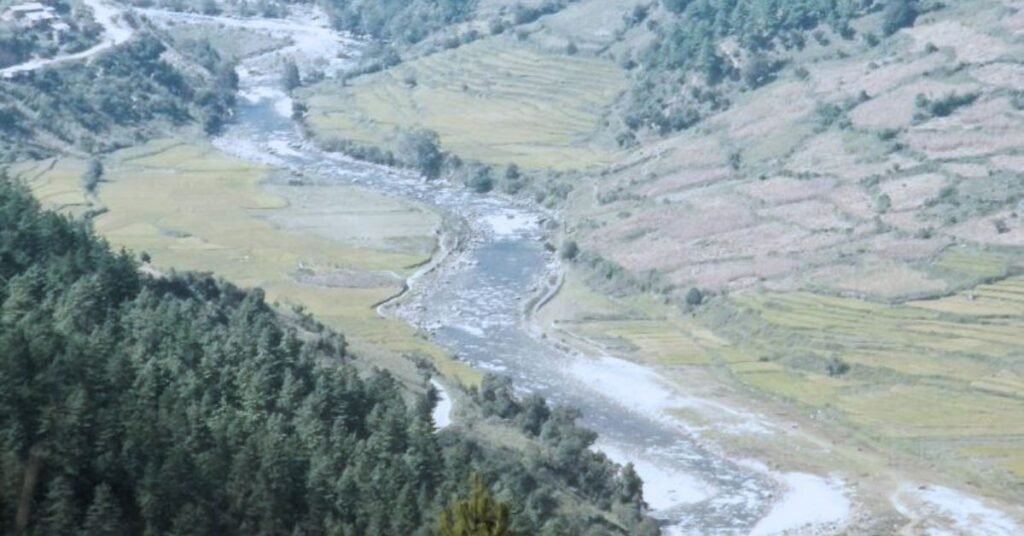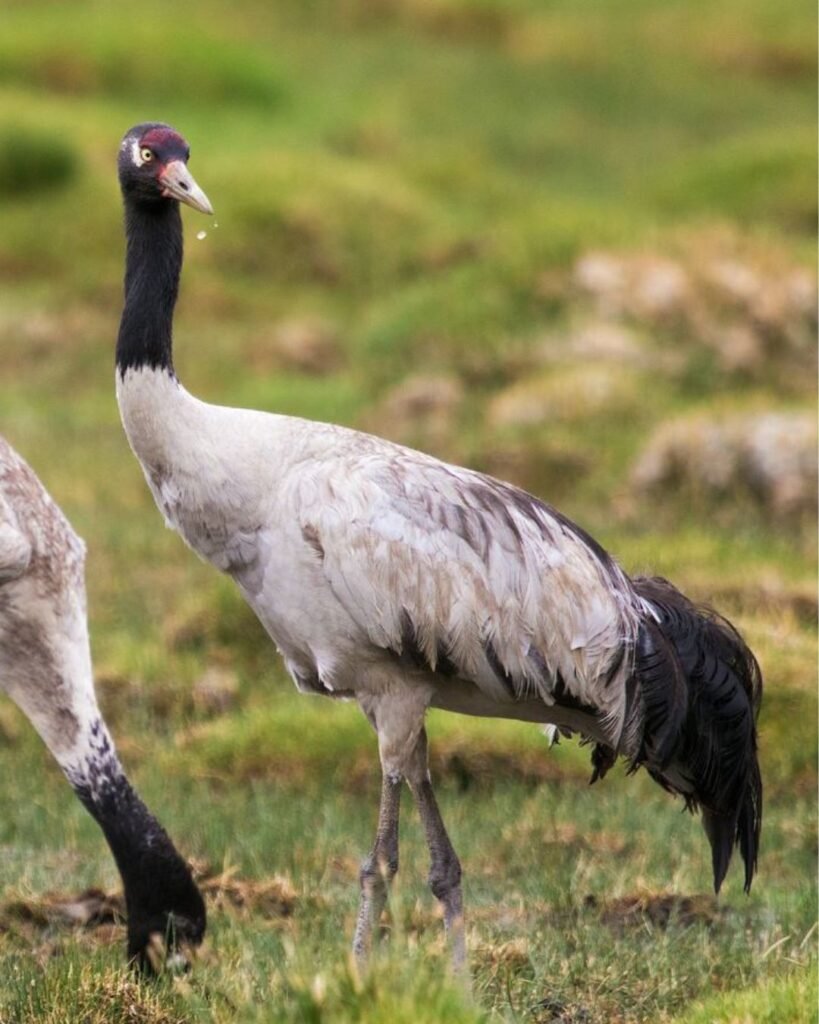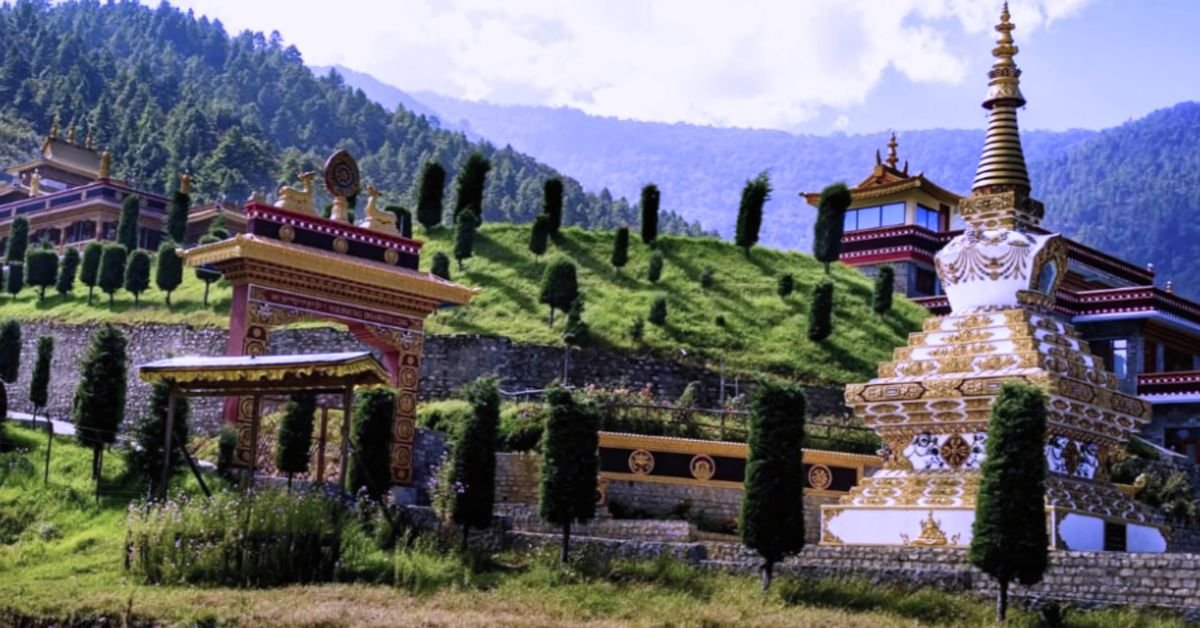Sangti Valley, located in West Kameng district lies about 15 km north of Dirang. This beautiful valley is surrounded by rolling green hills, pine forests and snow‑capped Himalayan peaks. The valley is inhabited by the indigenous Monpa community.
Monpa is one of Arunachal’s most ancient tribes – whose traditional stone‑and‑wood homes blend with the weather conditions and terrain of the valley. Each winter the endangered black‑necked crane migrates here from Tibet, adding to the valley’s rare wildlife sights. Dirang Valley’s apple orchards and Buddhist shrines are the gateway to the Sangti Valley.
More about Dirang Valley: The Gateway to Sangti Valley
The journey into Sangti Valley passes through Dirang Valley, a high Himalayan plateau celebrated for its natural beauty. Dirang Valley is famed for its warm hot-water springs and fertile orchards.
Apple and kiwi plantations adorn the slopes here, while yak and sheep farms dot the countryside. The town of Dirang, set at 1,560 meters elevation and has Buddhist monasteries (dzongs) and a lively market. In fact, the Dirang region is the wintering ground for the rare Siberian black-necked “stork” (crane) as well. Dirang Valley’s vibrant cultural with its mani walls, traditional monasteries and festivals makes it a worthy stop even before reaching Sangti.

Travel Distances and Tips
Plan on a full day’s drive from Assam’s plains to Sangti Valley. The road trip typically starts in Guwahati (Assam), from where it is about 255 km to Bhalukpong (the entry point to Arunachal). From Bhalukpong the route winds 140 km to Dirang by way of Bomdila. Sangti Valley itself is only about 7 km beyond Dirang. (In total, Bhalukpong–Dirang–Sangti is roughly 150 km and requires 6–7 hours of mountainous driving.)
- Bhalukpong→Dirang: ~140 km
- Dirang→Sangti Valley: ~7 km (via Bomdila–Tawang Highway)
- Best time to visit: Spring (April–June) and autumn (September–November), when the weather is clear and flowers bloom.
- Permit required: Every visitor must obtain an Inner Line Permit (ILP) at Bhalukpong before entering Arunachal Pradesh.
Pack warm clothing even in summer (nights can be cold). Along the way you will cross several mountain streams and tunnels; motorists often recommend starting early from Guwahati to reach Dirang or Sangti by afternoon.
Scenic Beauty of the Sangti Valley
The narrow valley floor is filled with greenery and orchards and the blue water of the Sangti River adds up to its beauty. In spring and summer the hillsides are filled with wildflowers and fruit blossoms. Local farmers tend to apple and kiwi orchards, walnuts and apricots here, so the roadsides are lined with fruit trees. Long, isolated roads under stately pine trees lead to quiet villages, and domestic animals graze peacefully in the meadows.

In winter, the valley transforms into a snowy wonderland. With the frozen river and distant peaks visible from the valley bottom. Sangti is free from tourist crowds, so you can truly experience nature and its wonders. The entire landscape – from the wooden Monpa cottages to the fluttering prayer flags in local homesteads – reflects the indigenous culture.
How to Reach Sangti Valley
Reaching Sangti Valley is easiest by private car. For travelers starting in Guwahati, hiring a car from a reputable service is recommended. A car travel agency in Guwahati can arrange a comfortable vehicle and driver for the journey. Taxi Nation is a well-known provider of Arunachal Pradesh car rental services from Guwahati. They offer modern sedans and SUVs (with professional drivers) that can safely navigate the hilly routes to Dirang and Sangti. By booking in advance, visitors secure a stress-free tour of the region’s sights at their own pace.
To fully enjoy the beauty of Sangti Valley and Dirang Valley, consider planning a multi-day itinerary (staying overnight at Dirang or camping at Sangti) and reviewing road conditions. Book your car rental to Sangti Valley through Taxi Nation so you can sit back and enjoy the Himalayan views. Book your Sangti Valley trip today!




